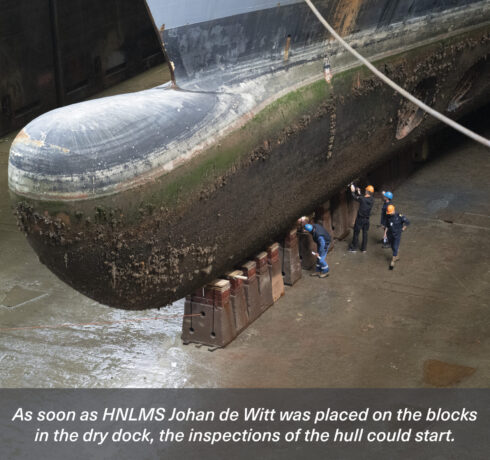The past month, a lot of progress has been made in the Damen Naval projects. Read here for the most important updates of the Midlife Update/Scheduled Maintenance of HNLMS Johan de Witt, the autonomous sailing project F.A.S.T., the F126 frigates for the German Navy and Superyacht YN 478.
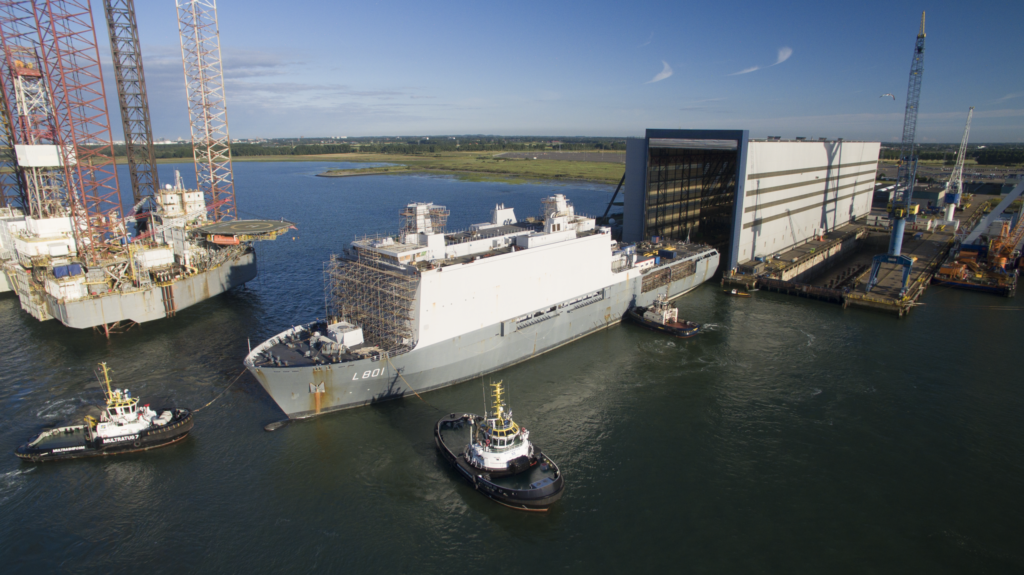 With the help of three tugboats, the ship was slowly moved backwards into the dry dock.
With the help of three tugboats, the ship was slowly moved backwards into the dry dock.
MLU Johan de Witt: ship goes in dry dock
HNLMS Johan de Witt is in dry dock. The amphibious transport ship was moved to the covered dock at Damen Shiprepair Vlissingen on 2 July for the next phase of the joint Midlife Update and Appointed Maintenance project. With the help of three tugboats, the ship was slowly moved backwards into the dry dock.
“The docking of the Johan de Witt is an important milestone, because it means the project is entering a whole new phase,” says Project Director Fer Tummers. “Given the size of the ship, docking is always exciting, but the entire process went flawlessly. The whole operation started at 6:00 in the morning and just after 12:00 the team could carry out the first inspections in the dock.”
The Dock & Harbour team from project partner Damen Shiprepair Vlissingen was responsible for the docking. “It went without a hitch,” said DSV Project Manager Rosan Schulp. “Even though the team has carried out so many docks before, it remains a challenge, especially with such a large vessel. But she went in well and was immediately on the blocks.”
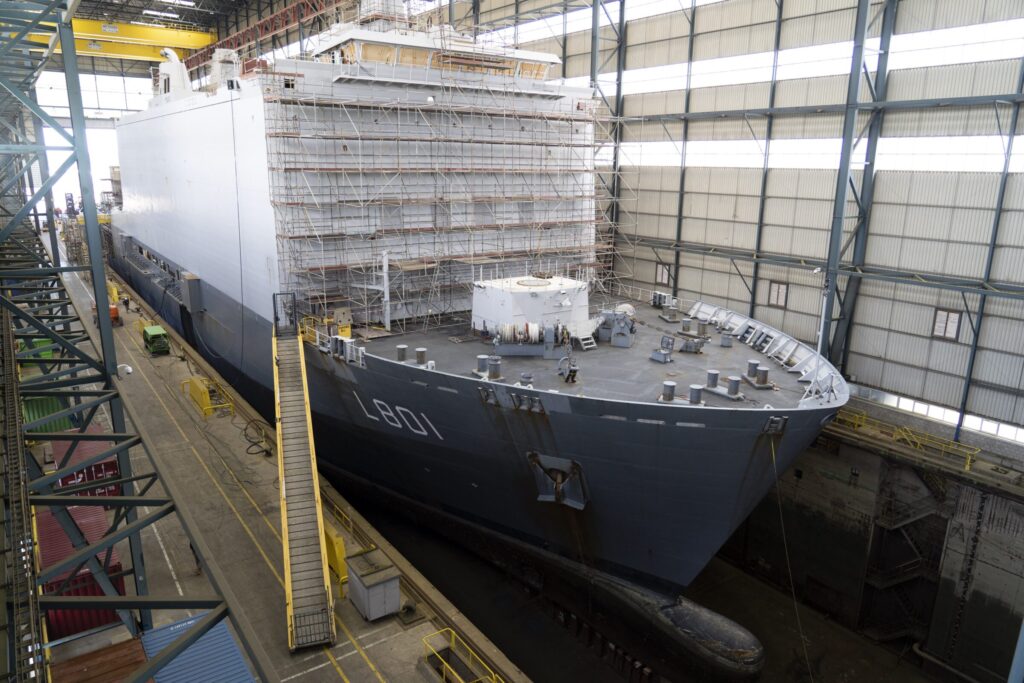 In the coming months, various dock-related works will be carried out.
In the coming months, various dock-related works will be carried out.
Rosan praises the good cooperation between DSV and Damen Naval. “It is a joint project in which we work around and after each other a lot. Good coordination and cooperation are crucial. Damen Naval has washed the ship clean and is busy blasting the hull. We then follow with our measurements, inspections, and repairs where necessary. After this, Naval will apply the various paint layers.”
In the coming months, various dock-related works will be carried out, such as blast-cleaning the entire underwater hull and treating all the tanks, dismantling and inspecting all the outboard valves.. The ship will also be repainted. In the meantime, work on board is also continuing and DSV is inspecting the various lifts. Now that the vessel is on the blocks, work can also begin on the stern ramp, the PODS and the bow thrusters.
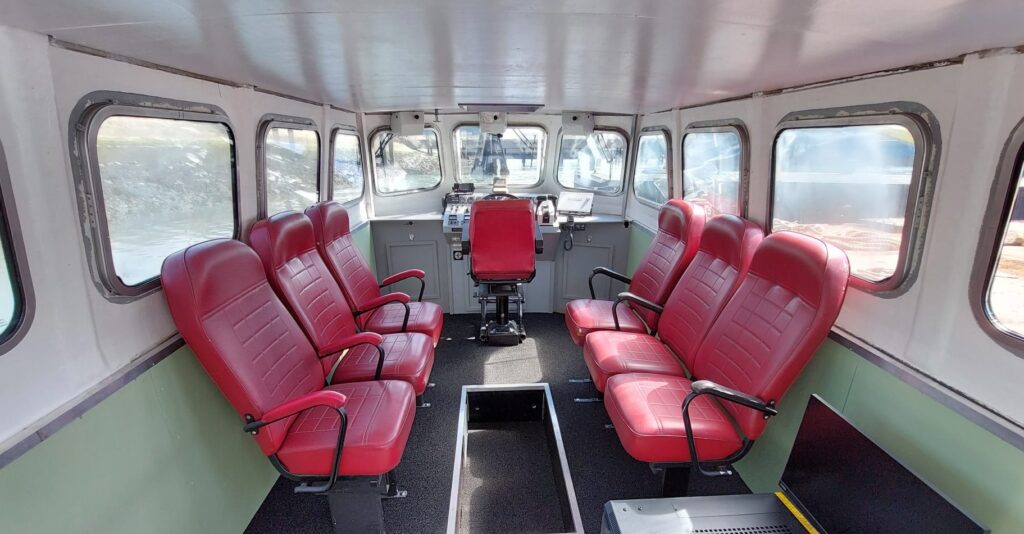 The Stan Patrol 900 is ready to start its ferry service.
The Stan Patrol 900 is ready to start its ferry service.
Ferry service started for Project F.A.S.T.
July was an important month for Project F.A.S.T. After extensive work, the Stan Patrol 900 boat was launched and handed over to Heen en Weer BV during a festive presentation. In the coming months, this company will provide the ferry service between Vlissingen Station and the city centre. The new website also went live: projectfast.nl.
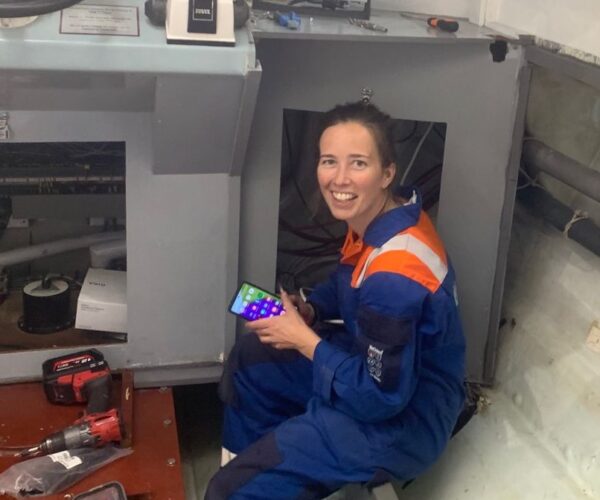 Technical Specialist Autonomy Karine Jansen.
Technical Specialist Autonomy Karine Jansen.
In the past few months, the Stan Patrol 900 has been thoroughly refurbished in Vlissingen-Oost, says Damen Naval Technical Specialist Autonomy Karine Jansen. “We emptied the boat completely, replaced part of the electrics, removed the toilet and took the measurements and made the necessary adjustments ready for the electric engines that will be installed this winter. For now, the diesel engines have been overhauled and reinstalled.”
The boat has also been refurbished with a view to its new function as a ferry. The benches have been reused, but positioned so that in the future there will be room for the battery pack of the new electric motors. “A lot of sensors have also been installed: six cameras and the radar. With this we are going to collect a lot of data in the coming months that we can use to develop the autonomous sailing models, so that we can convert the boat to be able to sail itself.”
On Tuesday 12 July the boat was hoisted back into the water and on Thursday 21 July a festive reception followed to celebrate the official commissioning of the boat by Heen en Weer BV. This took place in the presence of Harry van der Maas, Deputy for the Province of Zeeland, who handed over the European subsidy money to the project at the end of last year.
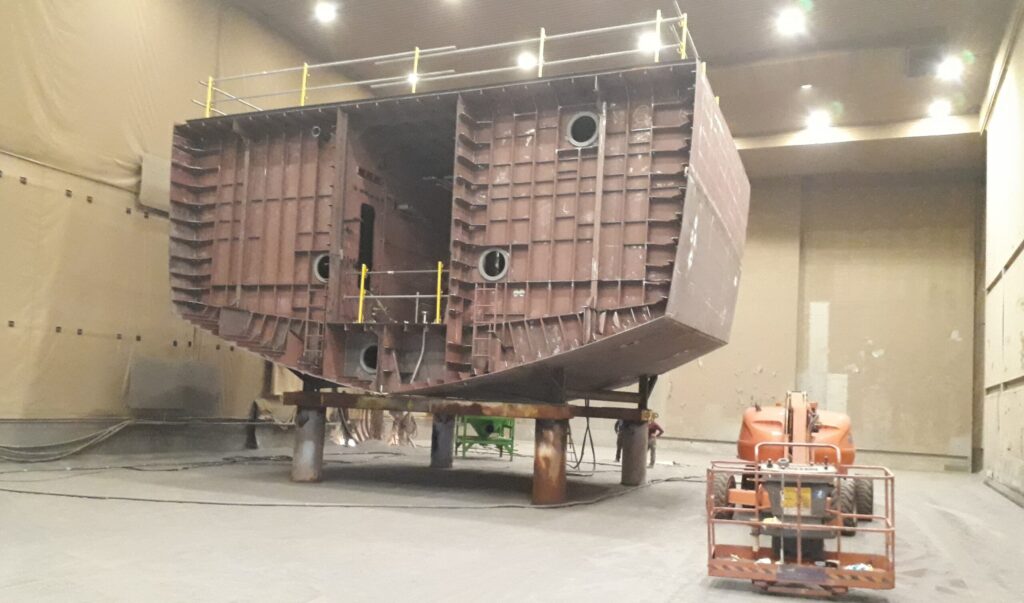 The first section (1151) in the blasting and conservation hall.
The first section (1151) in the blasting and conservation hall.
YN 478 project steps up a gear
Damen Naval’s work on the YN 478 Yacht project at Vlissingen-Oost has really stepped up a gear in the previous month. With representatives of the client, Damen Yachting, and the classification society present, the vessel’s first completed section successfully passed inspection on Friday 8 July.
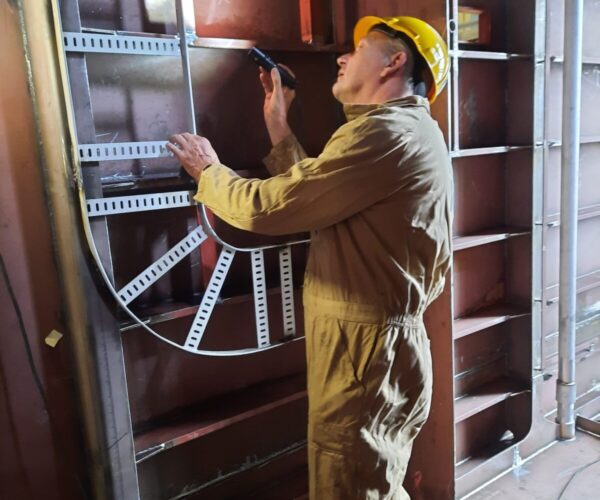 The vessel’s first completed section successfully passed inspection by Damen Yachting and the classification society.
The vessel’s first completed section successfully passed inspection by Damen Yachting and the classification society.
On Monday 11 July, this section was transported to the blasting and conservation hall. “This was an important milestone,” says the project’s Production Coordinator Stan Haag. “The team at op Vlissingen-Oost had worked hard to get to this point.” This section will be ready to leave the painting shed for Hall 2 in week 31.
Other parts of the project are experiencing intense cooperation between the production, planning and engineering departments. “The result of this can be seen in Hall 1, where nine out of the 13 sections are currently under construction, and in Hall 2, where the cradles for the hull assembly are being positioned,” continues Stan. Another notable point has been the involvement of Bloemsma Aluminiumbouw, which is assembling the first sections of the vessel’s aluminium superstructure.
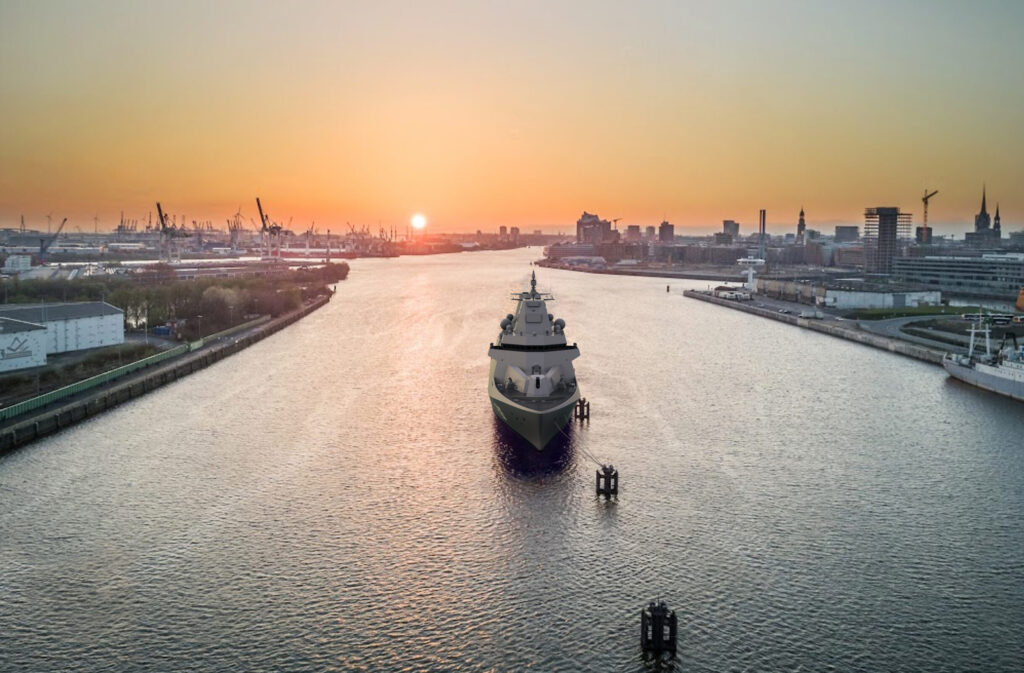 The engineering team sent the construction drawings of the German frigates to classification society DNV.
The engineering team sent the construction drawings of the German frigates to classification society DNV.
F126: construction drawings, testing, and a ‘human focus’
With a continuing focus on the basic engineering phase of the project, the F126 project took a number a significant steps forward in the previous month. The engineering team sent the construction drawings of the German frigates to the project’s classification society, DNV. “These drawings contain the basic grid structure of the vessel,” explains Damen Naval’s F126 Project Director Frank Verhelst. “Once they have been approved, we will have a good basis on which we can integrate the onboard equipment.” The project is also gearing up for the detailed engineering phase and contractual milestones that include client approval of 40 per cent of engineering documents and vessel signature calculations.
The F126 project also participated in two important visits. The first involved a trip with client representatives to Den Helder to research the semi-inflatable combat boats that Damen Naval will be delivering to the German Navy as part of this project. “This visit provided valuable information to us and the client in the further development and acceptance of these combat-ready speedboats and their integration into the design of the F126 frigates,” says Frank. The second visit was to Scotland to carry out underwater tests to prove the shock resistance of the overboard valves and piping supports. These tests yielded positive results; the piping structures passed, and the team learned a few points of improvement regarding the valves.
Furthermore, Frank is pleased to report that the project’s Efficiency Programme, which was established in March, has got off to a good start. This new initiative helps identify and solve issues that could impede progress of the project. “Besides looking at tooling, work processes and training, this Programme has a definite ‘human focus’; we are paying a lot of attention to the wellbeing of the team,” says Frank. “The results will not only be valuable for the execution of the F126 project – we are creating working methods for future projects too.”

